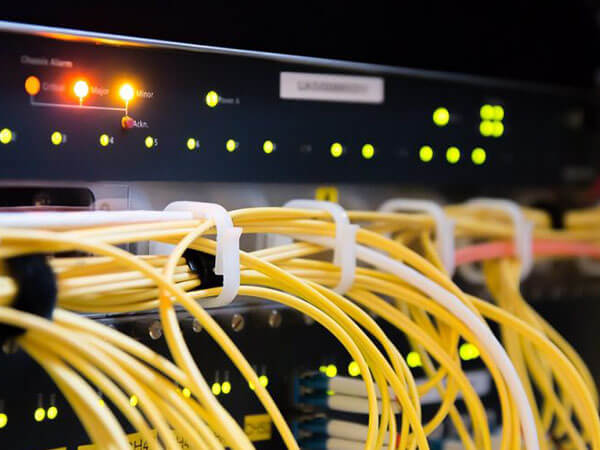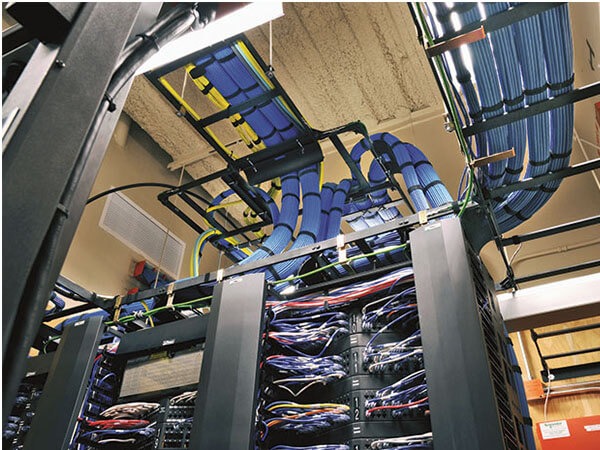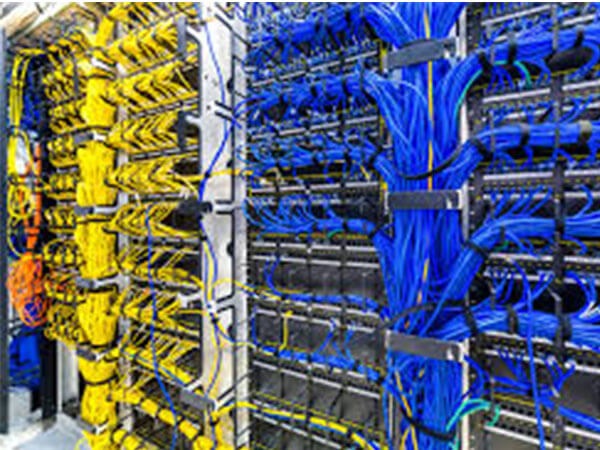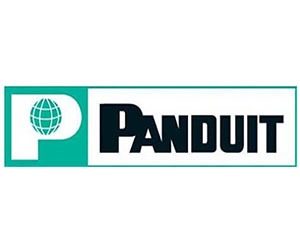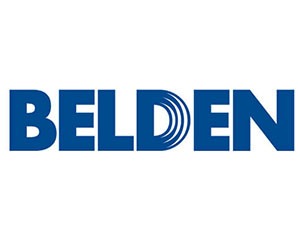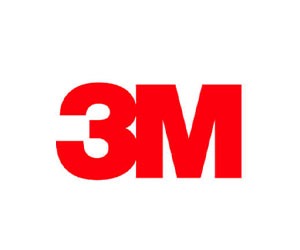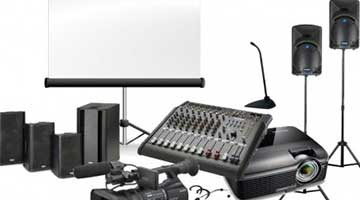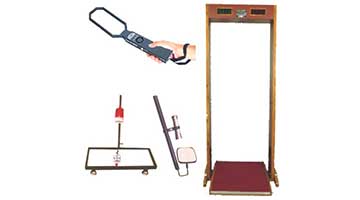Infrastructure Network Cabling systems
Cable is the medium through which information travels from one computer to another in the network or from one network to another network. There are several types of cables that are used in the network. The choice of the type of cable to be used in the network depends on the size and structure of the network to be built.
Types of Network cables :
Twisted Pair
It is the most popular at the present time to illustrate the wired connection, and it is usually similar to a telephone wire, but it consists of 8 internal wires and not 2 as in the case of the telephone, and so called because every two of the eight wires are coiled on each other so that we have four pairs out of eight wires
Twisted Pair :
1.Unshielded Twisted Pair(UTP):
Twisted pair are one of the most common cable types in local networks and are widely used in telephone systems
568 TIA / EIA defines standards for these cables as follows:
CAT1: for transmitting voice without data, as is the case with phones
CAT2: For data transfer up to 4 Mbps. It consists of four twisted pairs
CAT3: For data transfer up to 10 Mbps. It consists of four twisted pairs
CAT4: For data transfer up to 16Mbps, consisting of four twisted pairs
CAT5: For data transfer up to 100 Mbps, consisting of four twisted pairs
** Cat-5e
This type is an advanced type of the previous classification, but it supports more speeds of up to 1 gigabit per second and a frequency of up to 100 MHz, and this classification is covered slightly than the previous type due to support for gigabyte speeds, but its maximum length reaches 100 meters as well.
** Cat-6
This is what we can call Gigabit Ethernet as it supports speeds of up to 10 gigabytes per second and the data frequency within it is 250 MHz, and although it uses those maximum speeds, the maximum distance is 55 meters unlike the previous cables that reach 100 meters, but it can reach 100 meters when using normal speeds such as 1 gigabit per second.
** Cat-6A
This is the next development also for the previous type and it supports the same speed, which reaches 10 gigabits per second, but the frequency has reached twice in this type, reaching 500 MHz and its length at normal speeds and 10 gigabytes also reaches 100 meters and it may exceed it unlike the previous type.
** Cat-7
While the Cat-6 Ethernet cable is the official classification for Giga Ethernet, the Cat-7 Ethernet cable is the official classification for 10Gigabit Ethernet and therefore it supports 10 gigabit speed and a frequency higher than the previous classification up to 600 MHz. Isolate the wires individually, to be completely isolated from the other.
** Cat-7A
It is the natural development of the previous type to support speeds of up to 100 gigabytes per second and a higher frequency that far exceeds all of the above and up to 1000 MHz, and this indicates the extent of the tremendous development that is taking place in Ethernet cable technologies.
** Cat-8
These new cables to be introduced are Category 8 cables that will have the ability to transmit higher volumes in relatively shorter times. This cable has the capacity to support bandwidths of up to 2 GHz, and will initially be used in data centers of 25G and 40G Ethernet for distances up to 30 meters (100 feet). The cable has been manufactured with high quality tools and has been tested for use, and is not yet on the market.
2).Shielded Twisted Pair (STP):
Each pair is wrapped separately with better quality insulation, which provides greater protection for the wires from external interference with a further spread of the electrical signal.
Connector access for Twisted Pairs:
RJ-45 cable tie(connect) to the network card.
Coaxial Cable:
Coaxial cable is a type of copper cable used by TV cable companies. It is used by telephone companies. It is also used for broadcast television and video equipment (CCTV Systems). And its uses in wired and wireless radio networks. Whereas, short lengths of it are used to connect test devices and equipment such as signal generators. It is widely used for connecting computer networks in the local area but nowadays it has been replaced by stranded wires and optical fibers.
It is used in businesses and the ETHERNET and has two types:
Thick: This type is used in large networks
1.High cost
2.High data transfer speed
3.Can carry the signal up to a distance of 500 meters
Thin: used in small networks
1.The cost is lower than the previous type
2.High data transfer speed
3.Can carry the signal to a distance of 185 meters
3). Optical Fiber Cables:
It is a fiber made of pure glass, it is long and thin and its thickness does not exceed the thickness of a hair.
Many of these fibers are bundled into optical cables and are used to transmit optical signals over great distances.
1.Optical Fiber Components:
** Optical Fibers: It consists of two concentric cylinders called the first with the core, surrounded by another cylinder called the cladding, then the protective cover buffer coating and the outer covering of the cable (jacket)
Core:
It is a thin (cylindrical) glass in which the light travels and is made of silica grafted (with germanium, for example (Ge-Silica)
Cladding:
A material that surrounds the glass core (another surrounding cylinder) and works to preserve the light in the optical fiber center and is made of silica, so that the refractive index of the heart is greater than the refractive index of the coating, which is the required condition for the total internal reflection process, which is the basis of the guidance Light in optical fibers, as the light is completely reflected and by repeating the reflection the light propagates inside the core of the optical fiber and reaches the other end of the fiber.
Buffer Coating:
Plastic wrap protects the optical fiber from moisture or protects it from damage and breakage. Hundreds or perhaps thousands of these optical fibers line up in a bundle to form the optical cord that is protected by an outer covering called a jacket.
Sections of Optical Fibers:
1.Single Mode Fiber:
Through it, optical signals are transmitted in a uniform pattern and pattern in every fiber of the beam, which is used in telephone networks and television cables. This type of fiber is characterized by a small radius of the vitreous heart, reaching about 9 micron, through which the infrared laser beams of wavelength 1.3-1.55 nm pass through.
2.Multimode Fibers:
With it, many types of optical signals are transmitted through a single optical fiber, which makes it better for use in computer networks. This type of fiber has a larger radius of 62.5 micron and infrared radiation is transmitted through it.

